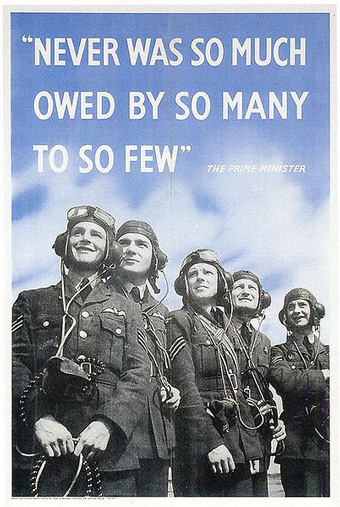 THUNDER BAY – It was the battle that changed the course of World War Two. The Battle of Britain started on September 7, 1940. The Blitz on London, and Great Britain was the prelude of Nazi Germany’s Operation Sea Lion which would have been an invasion of the British homeland.
THUNDER BAY – It was the battle that changed the course of World War Two. The Battle of Britain started on September 7, 1940. The Blitz on London, and Great Britain was the prelude of Nazi Germany’s Operation Sea Lion which would have been an invasion of the British homeland.
All that really stood between Britain and defeat in those stirring days were the brave pilots in their Hawker Hurricanes and Spitfires.
The Guardian paper, in Great Britain offers a map, based on the London Fire Brigade’s records of bombs hitting the city.
http://www.guardian.co.uk/news/datablog/2010/sep/06/london-blitz-bomb-map-september-7-1940
 Touring the bombed area, Prime Minister Winston Churchill said, “”They cheered me as if I’d given them victory, instead of getting their houses bombed to bits.”
Touring the bombed area, Prime Minister Winston Churchill said, “”They cheered me as if I’d given them victory, instead of getting their houses bombed to bits.”
The battle reigned on through the fall, with the pilots of the Royal Air Force along with Canadians, Australians, and free Polish Forces pilots driving back the Germans.
There were 574 Allied Airmen killed during the battle. 2662 German Airmen killed.
Prime Minister Winston Churchill, in the House of Commons stated, “Never in the field of human conflict was so much owed by so many to so few.”
http://www.bbc.co.uk/learningzone/clips/6981.flv
Although the Spitfire has gained a great deal of fame during the Battle of Britain, it was the Hawker Hurricane, many which was manufactured at the Canada Car plant in Thunder Bay which was responsible for 60% of the German planes which were claimed to have been downed. The Hurricane that scored the highest number of RAF victories during this period, accounting for 1,593 of the 2,739 German aircraft which the RAF said were shot down.
Today, the former Canadian Car plant is the site of Bombardier’s manufacturing facility in Thunder Bay.
